 W
WGreece in the Roman era describes the period of Greek history when Ancient Greece was dominated by the Roman Republic and the Roman Empire, commonly referred to as the Byzantine Empire after about AD 395. The Roman era of Greek history began with the Corinthian defeat in the Battle of Corinth in 146 BC. However, before the Achaean War, the Roman Republic had been steadily gaining control of mainland Greece by defeating the Kingdom of Macedon in a series of conflicts known as the Macedonian Wars. The Fourth Macedonian War ended at the Battle of Pydna in 148 BC and defeat of the Macedonian royal pretender Andriscus.
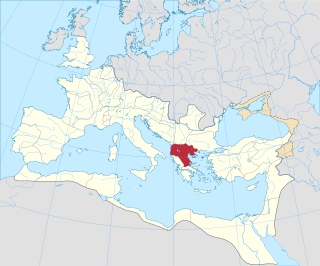 W
WThe Roman province of Macedonia was officially established in 146 BC, after the Roman general Quintus Caecilius Metellus defeated Andriscus of Macedon, the last self-styled king of the ancient kingdom of Macedonia in 148 BC, and after the four client republics established by Rome in the region were dissolved. The province incorporated the former kingdom of Macedonia with the addition of Epirus, Thessaly, and parts of Illyria, Paeonia and Thrace. This created a much larger administrative area, to which the name of 'Macedonia' was still applied.
 W
WThe 365 Crete earthquake occurred at about sunrise on 21 July 365 in the Eastern Mediterranean, with an assumed epicentre near Crete. Geologists today estimate the undersea earthquake to have been a magnitude 8.0 or higher. It caused widespread destruction in central and southern Greece, northern Libya, Egypt, Cyprus, Sicily, and Spain. On Crete, nearly all towns were destroyed.
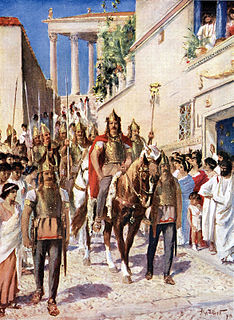 W
WAlaric I was the first king of the Visigoths, from 395 to 410. He rose to leadership of the Goths who came to occupy Moesia – territory acquired a couple of decades earlier by a combined force of Goths and Alans after the Battle of Adrianople.
 W
WThe Roman province of Asia or Asiana, in Byzantine times called Phrygia, was an administrative unit added to the late Republic. It was a Senatorial province governed by a proconsul. The arrangement was unchanged in the reorganization of the Roman Empire in 211.
 W
WThe Battle of Corinth of 146 BC was a decisive engagement fought between the Roman Republic and the Greek city-state of Corinth and its allies in the Achaean League. It resulted in the complete and total destruction of Corinth by a Roman army under the command of Lucius Mummius. The battle marked the end of the Achaean War and the beginning of the period of Roman domination in Greek history.
 W
WGaius Cassius Longinus, often referred to as simply Cassius, was a Roman senator and general best known as a leading instigator of the plot to assassinate Julius Caesar on March 15, 44 BC. He was the brother-in-law of Brutus, another leader of the conspiracy. He commanded troops with Brutus during the Battle of Philippi against the combined forces of Mark Antony and Octavian, Caesar's former supporters, and committed suicide after being defeated by Mark Antony.
 W
WThe Delphi Inscription, or Gallio Inscription, is the name given to the collection of nine fragments of a letter written by the Roman emperor Claudius c. 52 CE which was discovered early in the 20th century at the Temple of Apollo in Delphi, Greece.
 W
WThe Diocese of Asia was a diocese of the later Roman Empire, incorporating the provinces of western Asia Minor and the islands of the eastern Aegean Sea. The diocese was established after the reforms of Diocletian, was subordinate to the Praetorian prefecture of the East, and was abolished during the reforms of Justinian I in 535.
 W
WThe Diocese of Macedonia was a diocese of the later Roman Empire, forming part of the praetorian prefecture of Illyricum. Its administrative centre was Thessaloniki.
 W
WThe Diocese of Thrace was a diocese of the later Roman Empire, incorporating the provinces of the eastern Balkan Peninsula. Philippopolis was the capital.
 W
WHadrian was a Roman emperor from 117 to 138. He was born into a Roman Italo-Hispanic family that settled in Spain from the Italian city of Atri in Picenum. His father was of senatorial rank and was a first cousin of Emperor Trajan. He married Trajan's grand-niece Vibia Sabina early in his career, before Trajan became emperor and possibly at the behest of Trajan's wife Pompeia Plotina. Plotina and Trajan's close friend and adviser Lucius Licinius Sura were well disposed towards Hadrian.
 W
WHaemimontus was a late Roman and early Byzantine province, situated in northeastern Thrace. It was subordinate to the Diocese of Thrace and to the praetorian prefecture of the East. Its capital was Adrianople, and it was headed by a praeses. The province was superseded by the Theme of Thrace during the 7th century, but survived as an Orthodox ecclesiastical metropolis until late Byzantine times.
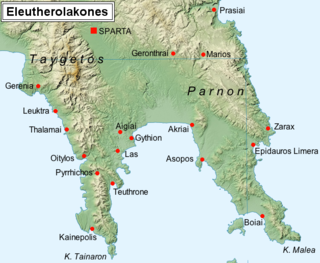 W
WThe League of Free Laconians was established in southern Greece in 21 BC by the Emperor Augustus, giving formal structure to a group of cities that had been associated for almost two centuries.
 W
WOribasius or Oreibasius was a Greek medical writer and the personal physician of the Roman emperor Julian the Apostate. He studied at Alexandria under physician Zeno of Cyprus before joining Julian's retinue. He was involved in Julian's coronation in 361, and remained with the emperor until Julian's death in 363. In the wake of this event, Oribasius was banished to foreign courts for a time, but was later recalled by the emperor Valens.
 W
WThe praetorian prefecture of Illyricum was one of four praetorian prefectures into which the Late Roman Empire was divided.
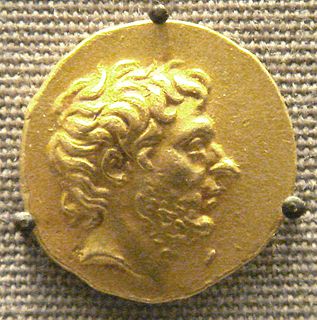 W
WTitus Quinctius Flamininus was a Roman politician and general instrumental in the Roman conquest of Greece.
 W
WRhodes is the largest of the Dodecanese islands of Greece and is also the island group's historical capital. Administratively the island forms a separate municipality within the Rhodes regional unit, which is part of the South Aegean administrative region. The principal town of the island and seat of the municipality is Rhodes. The city of Rhodes had 58,636 inhabitants in 2019. It is located northeast of Crete, southeast of Athens. Rhodes' nickname is The Island of the Knights, named after the Knights of Saint John of Jerusalem, who ruled the island from 1310 to 1522.
 W
WRhodope was a late Roman and early Byzantine province, situated on the northern Aegean coast. A part of the Diocese of Thrace, it extended along the Rhodope Mountains range, covering parts of modern Western Thrace and south-western Bulgaria. The province was headed by a governor of the rank of praeses, with Trajanopolis as the provincial capital. According to the 6th-century Synecdemus, there were six further cities in the province, Maroneia, Maximianopolis, Nicopolis, Kereopyrgos and Topeiros.
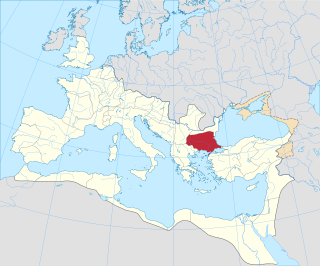 W
WThracia or Thrace is the ancient name given to the southeastern Balkan region, the land inhabited by the Thracians.
 W
WTraianoupoli or Traianopolis or Trajanopolis was a medieval settlement in the 14th century in the Evros regional unit of East Macedonia and Thrace region, northeastern Greece, nowadays named Loutra Traianopouleos.